 It’s always exciting when a new cultural space opens up in a city, especially in tough economic times.
It’s always exciting when a new cultural space opens up in a city, especially in tough economic times.
Holly’s, a new comedy club located in the same building that houses the multiplex movie theatre at 1000 Van Ness Avenue, launched last night with a lineup of comedians that included the San Francisco stalwart Michael Capozzola (who served as MC for the evening), a British ex-pat by the name of George Corrigan and headliner David Crowe (pictured) who hails from Seattle.
The space itself, which is a good, intimate size for comedy but lacks any individualizing details and feels a little bland with its non-descript cafeteria-style formica-topped rectangular tables and chairs, needs to be full of people to make it glow. The atmosphere in the room last night was lively and warm by the time the show started.
What I tasted of the menu, which offers shrimp cocktails, turkey and beef sliders, grilled cheese sandwiches, tomato soup, fish & chips and other simple comfort foods, was delicious, despite the to-be-expected sluggish and erratic opening-night service standards. (I’m sure Holly’s will have no trouble ironing out this kink in time.)
I enjoyed parts of the show itself immensely: David Crowe is a comedian of quirky intelligence: His first appearance on stage came before Corrigan’s warm-up act as a “visiting” comedian and last-minute addition to the program named Lloyd Althauser. Lloyd, an efete and nerdy coin collector from the South, turned out to be an alter ego of David Crowe and a very funny one at that. The comedian’s characterization of the coin collector remains a highlight of the evening for me. I also loved the freewheeling nature of his humor during the main set. The comedian found refreshing ways to approach very familiar subjects such as pregnancy and online dating.
I was much less impressed with Corrigan, whose comedy revolved almost entirely around tired jokes about being a British person in America and the Anglo-American divide in general. And Capozzola, a comedian who is usually intelligent and daring, wasn’t very much of either last night. Perhaps he doesn’t enjoy playing the MC for these types of occasions.
If I have any criticism of Holly’s programming, it’s that there is not a single female comedian on the lineup between now and the end of the year. I hope that the club will rectify this issue in 2011.
P.S. Holly’s has a heartwarming story behind it which I’d like to relay by way of postscript: Holly Horn, the namesake of the club and a former salesperson at the luxury car dealership across the street from the new venue on Van Ness Avenue, had a long-time dream of opening a nightspot for comedians. Her boss, a 91-year-old luxury car salesman by the name of Kjell Qvale, was so impressed with Holly, whom he met in 1997 when she came to work for his company, that he decided to open a club with her. Qvale, who was holding court at a ringside table last night and even got up to do a sweet little standup routine himself, became the owner of Holly’s and Holly, the club’s proprietor. The rest, as they say, is history. Let’s hope that the club has a long a distinguished future.

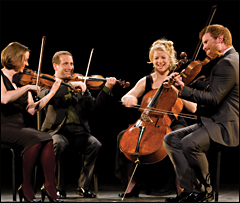 Is it a good thing or a bad thing that normal concert etiquette goes out of the window for lunchtime and commuter hour concerts?
Is it a good thing or a bad thing that normal concert etiquette goes out of the window for lunchtime and commuter hour concerts? It’s been hard to avoid baseball in San Francisco lately. Last night in particular was a symphony of blaring car horns and shrieking, gimme-five-slapping pedestrians as citizens made their excitement about the home team’s victory over the Texas Rangers strongly felt.
It’s been hard to avoid baseball in San Francisco lately. Last night in particular was a symphony of blaring car horns and shrieking, gimme-five-slapping pedestrians as citizens made their excitement about the home team’s victory over the Texas Rangers strongly felt.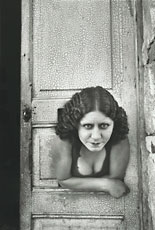 I’ve had the good fortune to experience so many cultural happenings this week that I’m quite behind on my commentary about them all. Just thought I’d use this opportunity to provide a quick roundup of three arts events that anyone in SF with a bit of cash to spend and some time on their hands should make a bee-line for:
I’ve had the good fortune to experience so many cultural happenings this week that I’m quite behind on my commentary about them all. Just thought I’d use this opportunity to provide a quick roundup of three arts events that anyone in SF with a bit of cash to spend and some time on their hands should make a bee-line for: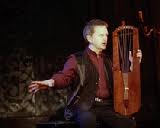 I like seeing performances in languages I barely understand or don’t understand at all.
I like seeing performances in languages I barely understand or don’t understand at all.
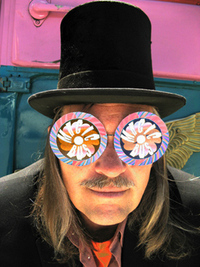 I wish I had enjoyed my tour on Saturday afternoon on The Magic Bus more than I did. But I didn’t. The experience left me feeling deflated and slightly nauseous.
I wish I had enjoyed my tour on Saturday afternoon on The Magic Bus more than I did. But I didn’t. The experience left me feeling deflated and slightly nauseous.
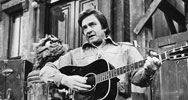 It was a tough decision to make — and stick to. The Giants were heating up AT&T Park and inching ever closer to victory (for the first time, I am told, in years); The Alonzo King Lines Ballet was packing them in for its fall season at Yerba Buena Center for the Arts. There were all manner of rehearsals, performances and late-night art exhibitions I could have been at last night.
It was a tough decision to make — and stick to. The Giants were heating up AT&T Park and inching ever closer to victory (for the first time, I am told, in years); The Alonzo King Lines Ballet was packing them in for its fall season at Yerba Buena Center for the Arts. There were all manner of rehearsals, performances and late-night art exhibitions I could have been at last night. I’m teaching a class this semester on 21st century composers and their music at UC Berkeley. The class is being run under the auspices of the Osher Learning for Life Institute (OLLI), an organization which specializes in offering educational courses on a wide range of subjects to older members of the community, and the Berkeley Symphony, which recently appointed me as its resident dramaturg.
I’m teaching a class this semester on 21st century composers and their music at UC Berkeley. The class is being run under the auspices of the Osher Learning for Life Institute (OLLI), an organization which specializes in offering educational courses on a wide range of subjects to older members of the community, and the Berkeley Symphony, which recently appointed me as its resident dramaturg.